The story of a head transplant that was never meant to happen
Categories: Health and Medicine | Science
By Pictolic https://pictolic.com/article/the-story-of-a-head-transplant-that-was-never-meant-to-happen.htmlOne night in 1971, in the American city of Cleveland, Ohio, a historic event occurred. Lying on the surgical table, the small, motionless creature opened its eyes and gnashed its teeth. His jaws snapped, almost grabbing the finger of the tired man in the white coat. The man who was adjusting the tube inserted in his small nostril was not afraid – he breathed a sigh of relief and smiled. It was Dr. Robert White, and he had just done the impossible-successfully transplanted the head of a living being.
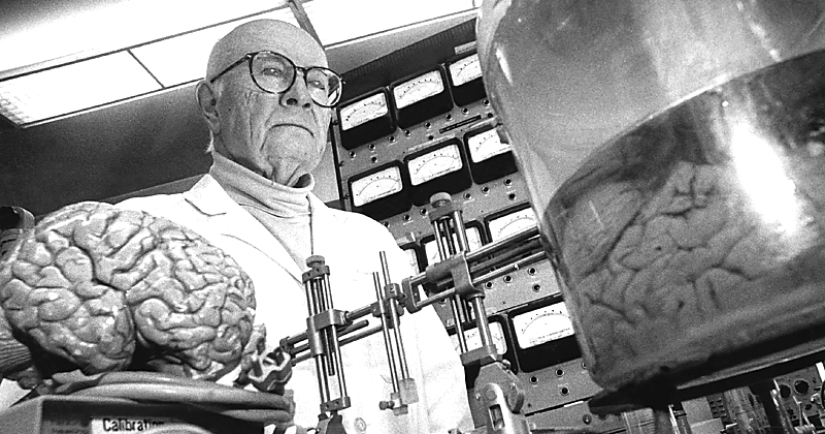
The small creature on the large white table, secured by metal clamps and entangled in tubes, was a rhesus macaque. Her other brother was lying headless on a nearby table, completely dead. Robert White has just transplanted a head from monkey A to Monkey B, and the animal has come to life. The macaque was paralyzed below the suture that crossed its neck, but its head showed obvious signs of life.
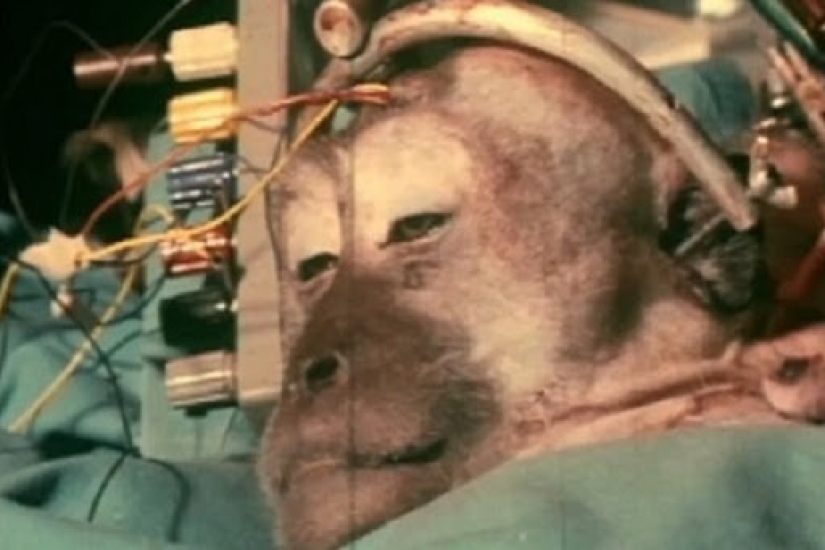
The obvious success seemed to have been achieved, but Dr. White's joy was incomplete. What happens in a brain attached to someone else's body? Is it possible to repeat this with a human? How will such a transplant affect the individual's consciousness and will it not entail disastrous consequences for the individual? There were many more questions.
The revolutionary event was preceded by years of work, dissection of hundreds of dead and living monkey brains, small victories and crushing failures. Against White was not only nature, on one of the main secrets of which he encroached, but also people. Animal rights activists called him a Frankenstein and a knacker, he was sued, and his colleagues laughed at him.
He won – the whole process of the macaque head transplant operation is carefully documented in photos and videos, and it will not be easy to challenge his success. Now Dr. Robert White was tormented by an even more improbable goal – a human head transplant. Now he knows for sure that this is possible, and although it will not be possible to return the functionality to the body yet, it is possible to breathe life into his new head.
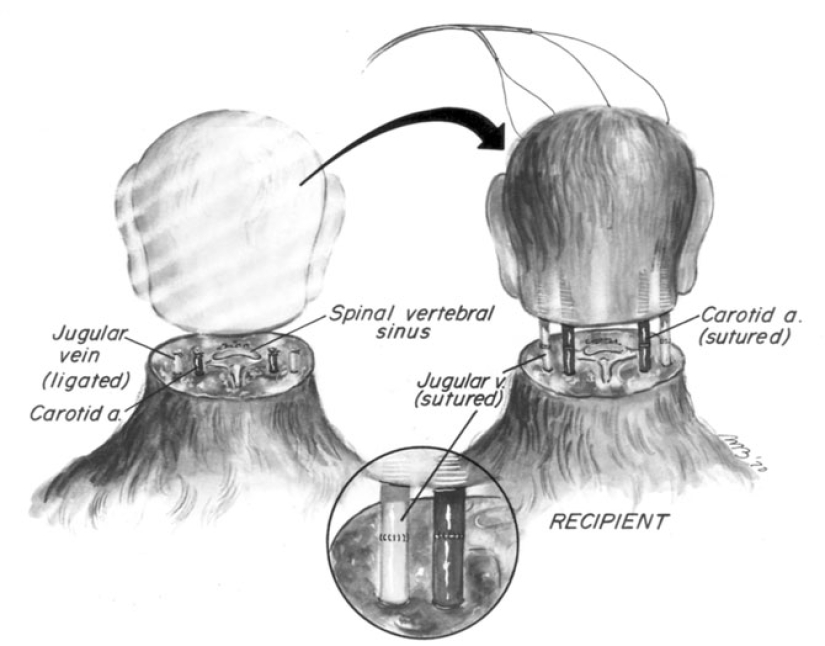
To understand how difficult the tasks were set by the scientist, it is worth going a little deeper into the theory. On average, the human brain weighs 1.4 kg and it is not just a gelatinous mass, pitted with convolutions. Hidden within are tens of billions of invisible nerves that respond to feelings, thoughts, actions, and actions.
Just 30 seconds without oxygenated blood causes a person to lose consciousness, one minute-and the brain begins to collapse, three minutes lead to irreversible damage, and five-to the death of the brain and the person. But how to solve this problem, because during a head transplant, the brain is disconnected from the circulatory system and it takes time to connect it to the vessels of the new body.
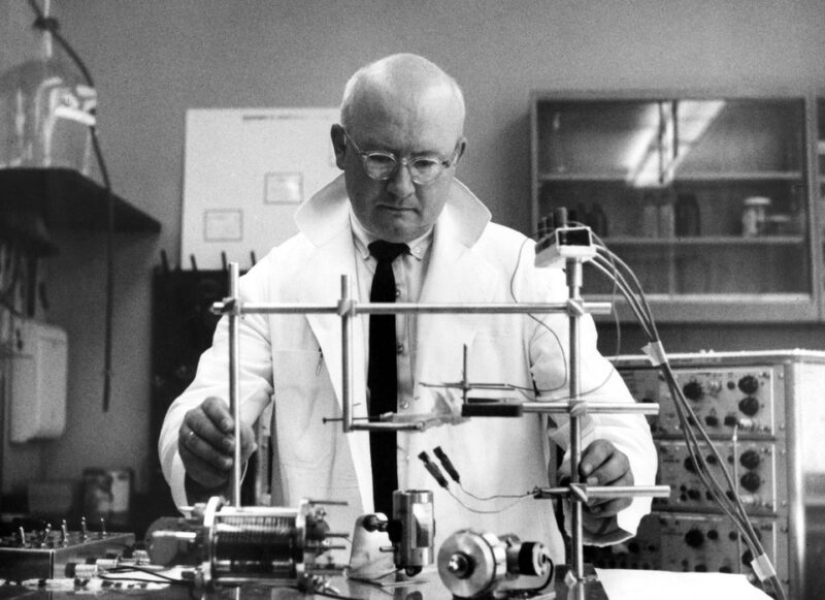
The solution to the problem of brain death was to cool it down. It has long been noticed that it is easier to bring a frozen person back to life without consequences than to die any other death. Science has known cases when a frozen person returned to full life 45 minutes after a cardiac arrest and all this time the brain went without food.
White encountered this phenomenon back in the 1950s, when he was treating spinal cord injuries with hypothermic cold. He was well aware that as the temperature of the brain decreases, its metabolic processes slow down, and its dependence on oxygen decreases. If you do the right calculation, you can remove the brain without harming it and put it in another body.
The doctor began to conduct experiments on monkeys. First, he carefully cut off the veins and arteries one by one and connected the primate's brain to an artificial circulatory system consisting of tubes and a pump that pumps blood and plasma. When the circulation was fully provided by the equipment, White would cut the animal's body until only its brain was in front of it.
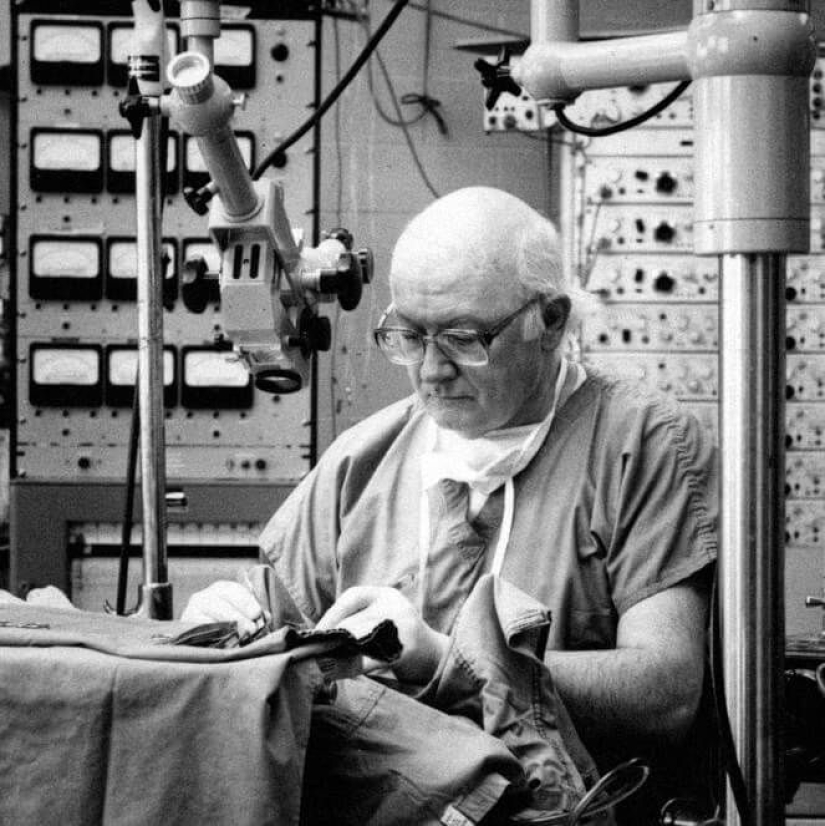
The macaque brain connected to the EEG machine showed activity – the same processes were taking place in it as in a living one. This meant that he had outlived the body and existed completely independently. Opponents refused to believe that the extracted animal brain was undergoing the same processes as in normal conditions, many even claimed that it was no longer alive. But no one could dispute the fact that something was happening in this organ, the size of an onion.
To prove that brain transplantation was possible, White needed to demonstrate that the organ was still conscious. And this could only be done by transplanting the head completely. The American was not the first in this field. In the late 50s, the Soviet scientist Vladimir Demikhov successfully transplanted a dog's head. He sewed the front part of the puppy with the head, chest and paws to the adult and both dogs lived for a while.
Dr. White and his team achieved much more – he cut off one head and replaced it with another, and this new head saw, heard, smelled, and even tried to defend itself. With a new head, the rhesus macaque lived for only 9 days, but this was not so important-Dr. White's theory about maintaining consciousness was confirmed.
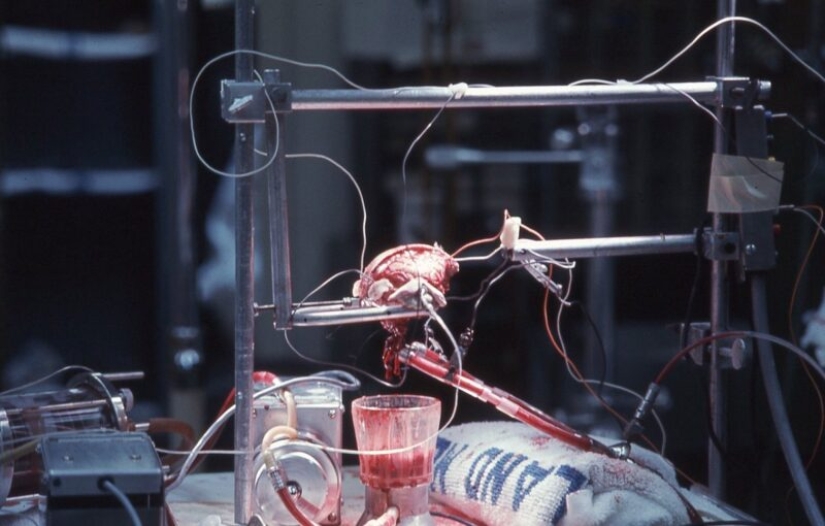
But why was all this necessary for a well-known doctor who had great authority in the scientific world? Failure could expose him to a very unfavorable side, turn him into a laughing stock and even an outcast of the scientific community. White was above vanity and profit – he wanted to save lives. The main place of work of the neurosurgeon was not the university laboratory, but the clinic where he operated on real patients.
Every time someone died, White took it as a personal tragedy – he, like no one else, knew that these people could be helped and that he held the key to their lives in his hands. So White was in a hurry and gave his experiments all of himself without a trace.
Sometimes White performed miracles. Once he brought back to life the brain of a man who literally held in his hands. This patient was in an accident and the doctor saved him, although no one could believe it. On the operating table of the neurosurgeon there were a variety of people – teenagers after accidents, athletes after injuries and hopeless cancer patients. It was not possible to save everyone – once under the scalpel of Robert White, his friend died.
The scientist believed that as long as the brain is alive, a person is not dead and can be saved by giving him a new body. White spoke about this aloud and his words gave hope to those who had long turned away from medicine. That was the kind of person Craig Vetowitz was when he asked a doctor in 1999 to give him a new body.
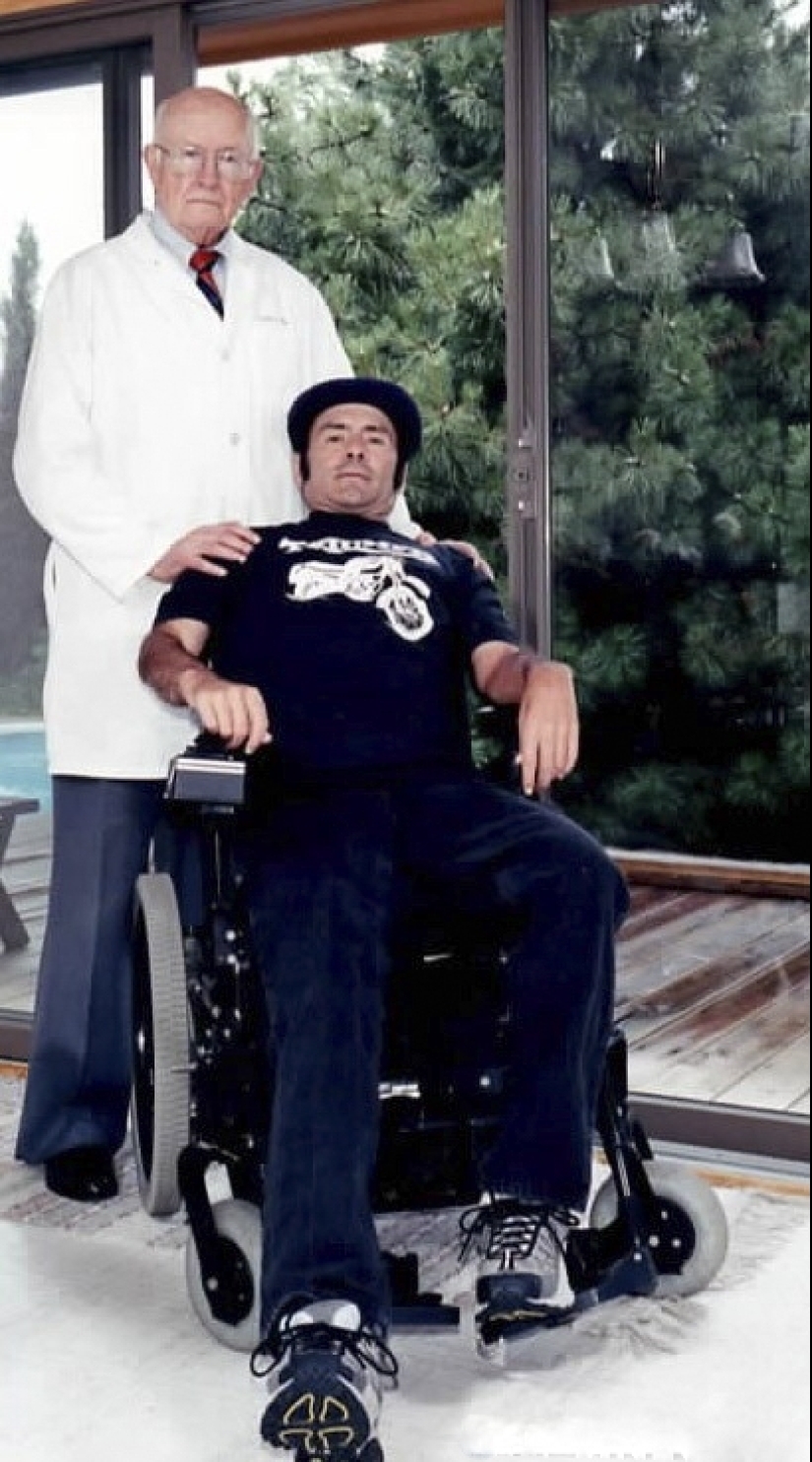
Vetowitz suffered a severe spinal injury in his youth and was completely paralyzed. He only had control of his head – the other parts of his body were motionless and the man didn't even feel them. Disability did not prevent Craig from achieving success in life – he had a successful business, a wife and two children. He himself developed a device that allows you to write without hands, and upgraded a serial wheelchair.
Wetowitz turned to White because his body was slowly dying. The man's kidneys were working worse and worse, and no surgeon took on their transplantation due to Craig's severe disability. While talking to the volunteer, White raised a variety of topics. There is no doubt that even if the operation is successful, Vetowitz will remain paralyzed, but his life will be better and longer.
But will Craig still be himself after the transplant? How will a new body with its own hormonal and nervous system affect an unfamiliar brain? Will it end in insanity or a completely vegetative state? Robert White had no answers to these questions. But even that didn't stop Vetowitz.
Dr. White prepared the protocol of the operation – he knew exactly how it would happen and described everything in seconds. The scientist knew that a human brain transplant is easier to perform than a monkey brain, since the organ itself and the vessels are much larger. But this was an experiment on a living person, and for its implementation, a lot of money and official permission were needed.

The doctor and his patient had neither. In 1999, after meeting Craig Wetowitz, White wrote:
The brilliant scientist died in 2010, being one step away from an incredible discovery. No one has yet performed a head transplant on a living person, although in 2017, Dr. Sergio Canavero promised to perform this operation at a university. This time, no one knows what prevented the surgeon – he abandoned his bold plan at the last moment.
Keywords: USA | Science | Health and medicine | Monkey | Brain | Macaques | Paralysis | Scientist | Genius | Transplant
Post News ArticleRecent articles

In recent years, our lives broke a lot of new design trends, allowing you to get the most comfort for the least money. In ...

Those who have left their mark in the history of cinema, about those about whom I remember with fondness, love and admiration, ...
Related articles

The mystery associated with the lack of memories of the first 3 -3.5 years of a person's life has haunted scientists for many ...

Man is accustomed to consider himself the most intelligent being on Earth. Despite his very weak physical abilities, he manages the ...

In 2019, a resident of the United Arab Emirates, Munira Abdullah, regained consciousness in a private clinic in Germany after 27 ...

In 1957, the picture, called " The Kiss of Death "("Il Bacio della Morte"), flew around the world. In the photo, actress Linda ...